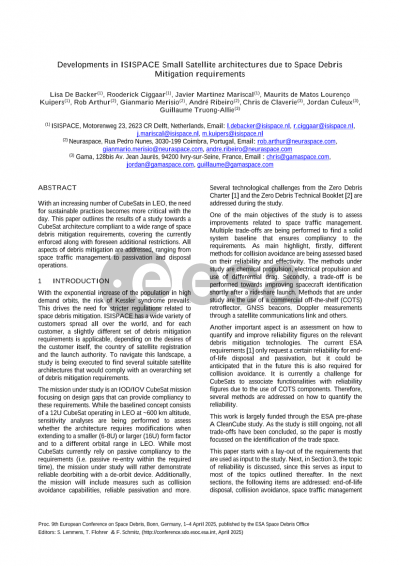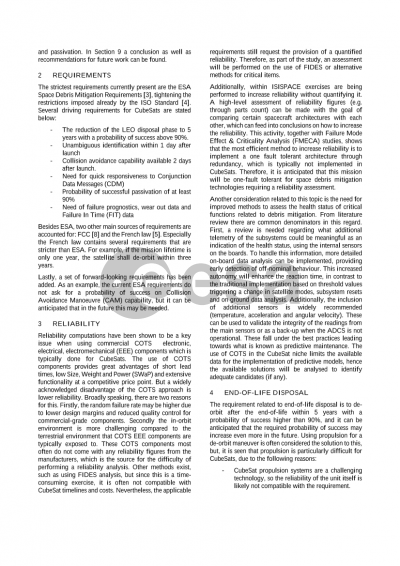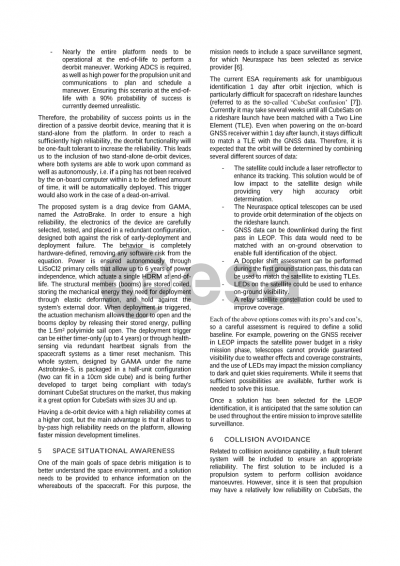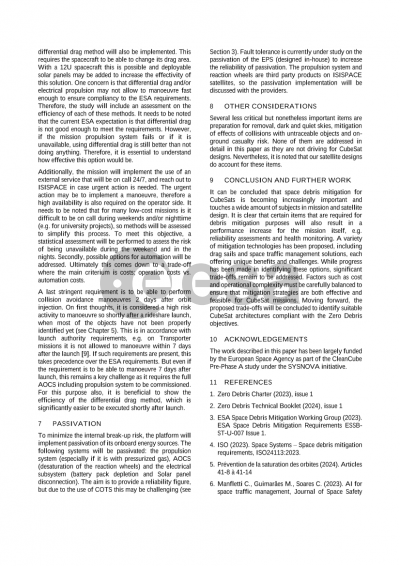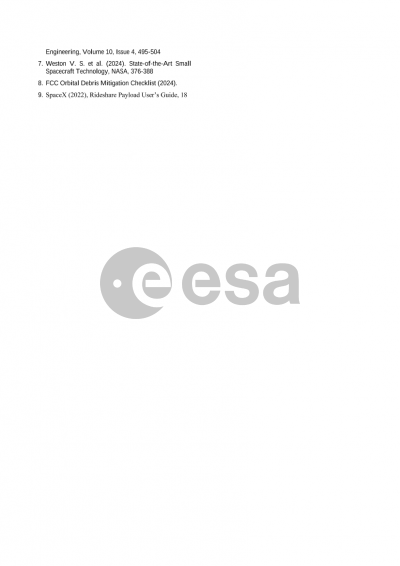Document details

Abstract
With an increasing number of CubeSats in LEO, the need for sustainable practices becomes increasingly critical. This paper outlines the results of a study towards a CubeSat architecture compliant to a wide range of space debris mitigation requirements, covering the currently enfored along with foreseen additional restrictions. All aspects of debris mitigation are addressed, ranging from space traffic management to passivation and disposal operations.
The strictest requirements currently present are the ESA Space Debris Mitigation Requirements [ESSB-ST-U-007 Issue 1], tightening the restrictions imposed already by ISO24113:2023. The main highlight is the reduction of the LEO disposal phase to 5 years with a probability of success above 90%. Additionally, there have been modifications on the passivation, collision avoidance and space surveillance and tracking requirements. It can be seen that other non-ESA entities are also increasing the strictness of debris mitigation requirements (e.g. FCC), therefore as a start of the study, requirements from different parties are consolidated into one overarching set. Expected evolvement of these requirement are anticipated, meaning that stricter requirements than are currently applicable will be accounted for.
The mission under study is an IOD/IOV CubeSat mission focusing on design gaps that can provide compliancy to these requirements. While most CubeSats currently rely on passive compliancy to the requirements (i.e. passive re-entry within the required time), the mission under study will rather demonstrate reliable deorbiting with a de-orbit device. Additionally, the mission will include measures such as collision avoidance capabilities, reliable passivation and more.
A main objective of the study is related to space traffic management. Multiple trade-offs are performed to find a solid system baseline that ensures compliancy to the requirements. As main highlight, firstly, different methods for collision avoidance are assessed based on their reliability and effectivity. The methods under study are chemical propulsion, electrical propulsion and use of differential drag. Secondly, a trade-off is performed towards improving spacecraft identification shortly after a rideshare launch. Methods that are studied are the use of a COTS retroflector, use of GNSS beacons, use of Doppler measurements through a satellite communications link and potentially other methods.
A main outcome are conclusions on how to quantify and improve reliability assessments on the relevant debris mitigation technologies. The current ESA requirements only request a certain reliability for end-of-life disposal and passivation, but it could be anticipated that in the future this is also required for collision avoidance. It is currently a challenge for CubeSats to associate functionalities with reliability figures due to the use of COTS components which typically do not contain this information in their specifications. However, a high level assessment of reliability figures can be made with the goal of comparing certain spacecraft architectures with each other, which can feed into conclusions on how to increase the reliability. This activity, together with FMECA studies, shows that the most efficient method to increase reliability is to implement a one fault tolerant architecture through redundancy. This is typically not implemented in CubeSats, but is a widely used method to incraese reliability. Therefore, it is anticipated that this mission will be one-fault tolerant for space debris mitigation technologies requiring a reliability assessment.
Preview
